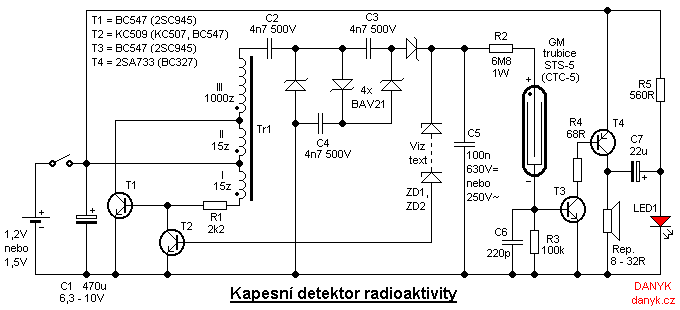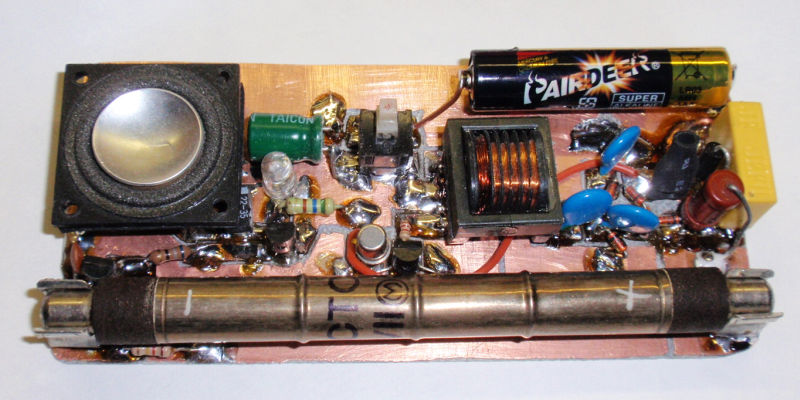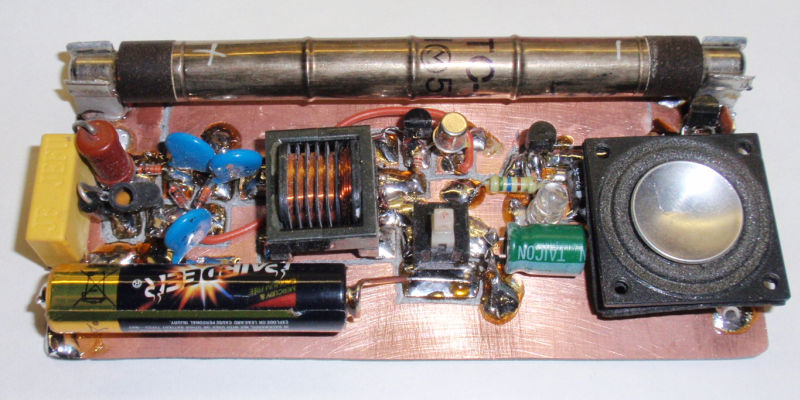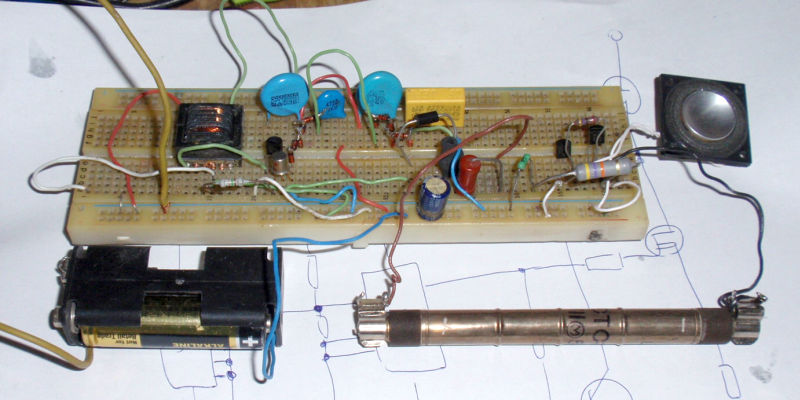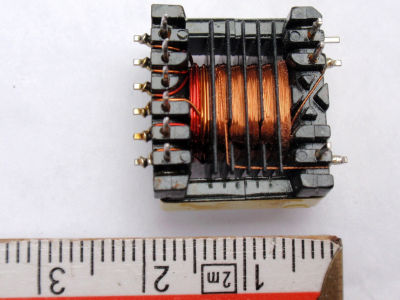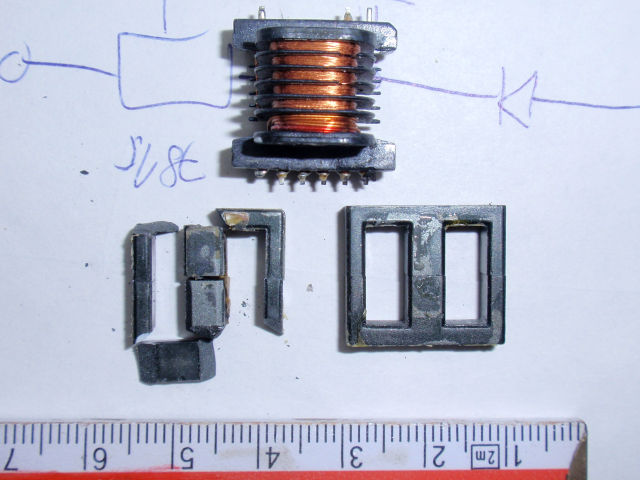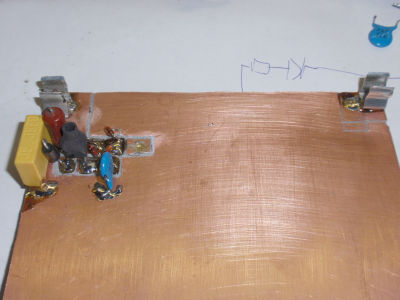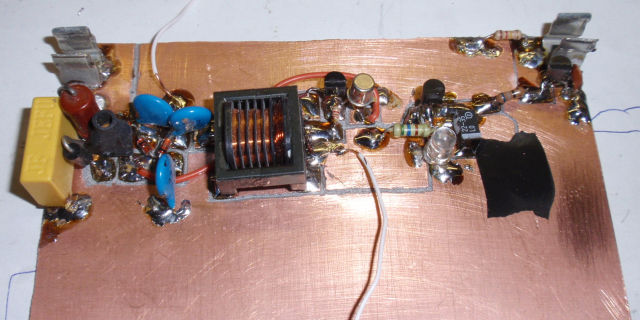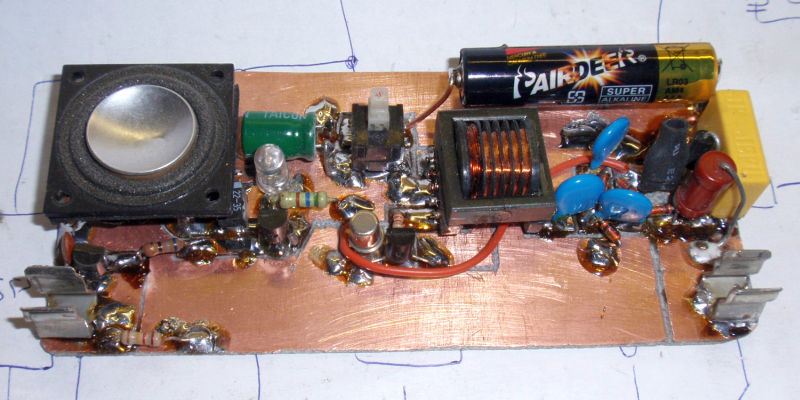This is a simple homemade miniature detector (indicator) of radioactivity (ionising radiation), which uses a Geiger-Muller (GM) sensor tube.
This is a detector (indicator), not a meter, because it is not equipped with a measuring device,
but only with an optical and acoustic indication. But the device could be used as a basis for an analog meter or a digital counter ass well.
My Geiger - Muller (GM) tube is STS-5 (СТС-5) type made in former USSR, sensitive to beta and gamma radioation.
It could be replaced with a very similar but newer SBM-20 (СБМ-20) tube.
The Geiger tube used requires a voltage of 400V.
This is generated by a switching inverter with T1 and T2 transistors. T1 acts as an oscillator, which drives the miniature transformer Tr1.
Tr1 is a high voltage transformer for CCFL tubes. For better efficiency I replaced the air-gapped core with a
core without an air gap. The primary is rewound to 2 x 15 turns 0.3 mm diameter. The original secondary stays unchanged, it is about 1000 - 1200 turns.
T2 acts as a feedback. When the voltage on C5 reaches 400V, current begins to flow through zeners ZD1 and ZD2 and will reduce the duty cycle of oscillator.
Total Zener diode (ZD) voltage is 400V. You can also use a different number of zeners, transils or metal oxide varistors as long as the sum of voltage stays 400V.
The goal when designing the circuit was a very low consumption. I used a voltage regulation with feedback instead of just a lossy parallel regulation.
Tr1 would itself be able to deliver 400V, but the use of a voltage multiplier reduces the power consumption (lower secondary voltage allows for lower
losses in the transformer core, capacitive losses, etc.).
The Geiger tube works in the simpler - ungrounded connection. Pulses are amplified by transistors T3 and T4 and subsequently indicated
using a small speaker (about 8 to 32 ohm) and superbright red LED diode. LED is powered by a voltage doubler circuit, because
its voltage drop is about 1.6 - 2 V and the input
voltage is not enough by itself to light it up.
I used a small 16 ohm speaker from an old LCD monitor. The Geiger tube socket can be used the same as for 6.3 x 32mm tubular fuses.
Detector indicates about 25 pulses per minute at normal background 10uR / h (equivalent to approximately 0.1 uSv / h).
The device I was able to build with dimensions of just 110 x 50 x 15mm. Length is determined by the length of the tube.
The device is powered by AA or AAA 1.5 V battery or 1.2 V NiCd or NiMH rechargeable battery. The current consumption is only about 4 mA.
Rechargeable AA NiMH batteries reach about 2400mAh capacity, and thus allow up to 600h of operation per charge :).
For comparison, my old RBGT-62 radiometer draws 75 mA from 3V and thus has a 37.5 x more power consumption.
You might also be interested in: Digital radiometer - dosimeter.
